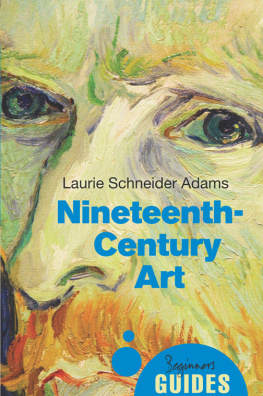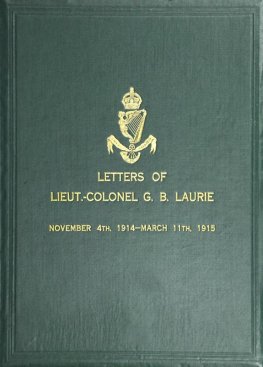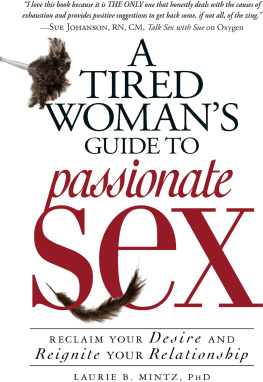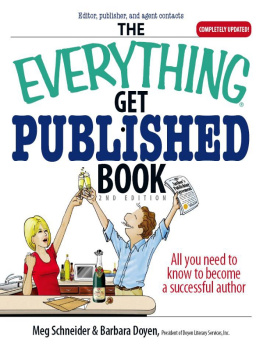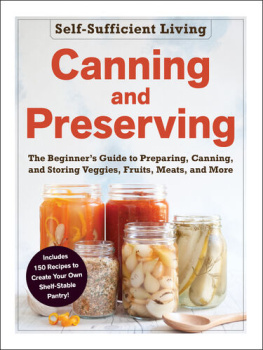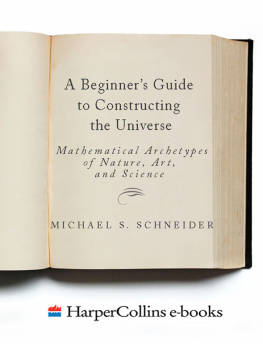Laurie Schneider Adams - Art : A Beginners Guide
Here you can read online Laurie Schneider Adams - Art : A Beginners Guide full text of the book (entire story) in english for free. Download pdf and epub, get meaning, cover and reviews about this ebook. year: 2012, publisher: Oneworld Publications, genre: Romance novel. Description of the work, (preface) as well as reviews are available. Best literature library LitArk.com created for fans of good reading and offers a wide selection of genres:
Romance novel
Science fiction
Adventure
Detective
Science
History
Home and family
Prose
Art
Politics
Computer
Non-fiction
Religion
Business
Children
Humor
Choose a favorite category and find really read worthwhile books. Enjoy immersion in the world of imagination, feel the emotions of the characters or learn something new for yourself, make an fascinating discovery.
- Book:Art : A Beginners Guide
- Author:
- Publisher:Oneworld Publications
- Genre:
- Year:2012
- Rating:3 / 5
- Favourites:Add to favourites
- Your mark:
- 60
- 1
- 2
- 3
- 4
- 5
Art : A Beginners Guide: summary, description and annotation
We offer to read an annotation, description, summary or preface (depends on what the author of the book "Art : A Beginners Guide" wrote himself). If you haven't found the necessary information about the book — write in the comments, we will try to find it.
Art : A Beginners Guide — read online for free the complete book (whole text) full work
Below is the text of the book, divided by pages. System saving the place of the last page read, allows you to conveniently read the book "Art : A Beginners Guide" online for free, without having to search again every time where you left off. Put a bookmark, and you can go to the page where you finished reading at any time.
Font size:
Interval:
Bookmark:
ONEWORLD BEGINNERS GUIDES combine an original, inventive, and engaging approach with expert analysis on subjects ranging from art and history to religion and politics, and everything in between. Innovative and affordable, books in the series are perfect for anyone curious about the way the world works and the big ideas of our time.
aesthetics
africa
anarchism
aquinas
art
artificial intelligence
the bahai faith
the beat generation
biodiversity
bioterror & biowarfare
the brain
british politics
the buddha
cancer
censorship
christianity
civil liberties
classical music
climate change
cloning
cold war
conservation
crimes against humanity
criminal psychology
critical thinking
daoism
democracy
descartes
dyslexia
energy
engineering
the enlightenment
epistemology
evolution
evolutionary psychology
existentialism
fair trade
feminism
forensic science
french revolution
genetics
global terrorism
hinduism
history of science
humanism
islamic philosophy
journalism
judaism
lacan
life in the universe
literary theory
machiavelli
mafia & organized crime
magic
marx
medieval philosophy
middle east
NATO
nietzsche
the northern ireland conflict
oil
opera
the palestineisraeli conflict
paul
philosophy of mind
philosophy of religion
philosophy of science
postmodernism
psychology
quantum physics
the quran
racism
renaissance art
shakespeare
the small arms trade
sufism
volcanoes


A Oneworld Paperback Original
Published by Oneworld Publications 2012
This ebook edition published 2012
Copyright Laurie Schneider Adams 2011
The moral right of Laurie Schneider Adams to be identified as the Author of this work has been asserted by her in accordance with the Copyright, Designs and Patents Act 1988
All rights reserved
Copyright under Berne Convention
A CIP record for this title is available from the British Library
ISBN 978-1-85168-853-1
Ebook ISBN 978-1-78074-022-5
Typeset by Glyph International Ltd., Bangalore, India
Cover design by vaguelymemorable.com
Oneworld Publications
185 Banbury Road
Oxford OX2 7AR
England
Learn more about Oneworld. Join our mailing list to find out about our latest titles and special offers at:
www.oneworld-publications.com
At Oneworld Publications, I would like to thank Mike Harpley for proposing that I write a beginners guide to art, Paul Boone for his skill in obtaining the illustrations, Rachel Beaumont for her careful editing and helpful suggestions, Kirsten Summers, and Kathleen McCully. Prof. Mary Bittner Wiseman has been particularly helpful in matters of philosophy and Prof. Larissa Bonfante came up with a few excellent ideas and was always available to answer questions on antiquity. I am grateful to John Adams and Caroline Adams for reading the entire manuscript and providing many useful editorial comments.
Plates
Figures
Art is one of the most important and useful expressions of human civilization. Works of art reflect the creativity, skill, and talent of individuals and of entire cultures; art provides sources of beauty, of intellectual challenge, of change and development, and of formal, analytic perception. Like the ability to read and write, the arts distinguish the human race from the other species that populate the earth, and the categories of art, as well as the ideas that inspire them, are numerous. This book deals with the major visual arts pictures, sculptures, and buildings and more recent art forms such as installation. It also incorporates the ideas of artists, occasionally reinforcing them with direct quotations from artists themselves. Artistic themes, some that are universal and found throughout the world, and others that may be specific to a particular culture or to a particular time in history, are threaded throughout the text.
Works of art are reflections of the artists who produce works and thus can provide a window onto the character of an individual artist as well as onto the creative process. As a lens through which to view a culture, works of art are invaluable. What, for example, do the cave paintings tell us about prehistoric people? What does a colossal pyramid tell us about ancient Egypt? What do the human scale and idealized forms of most Classical Greek sculptures tell us about fifth-century BC Greece? How did Classical Greece become a foundation of Western civilization? Why does the Classical tradition persist to the present day? Why do some cultures produce portraits, landscapes, and still lifes, whereas others do not? How do works of art reinforce the power of rulers? What do they tell us about the religious beliefs and practices of certain cultures? These and other questions can be raised and often answered by studying art and its history.
In a beginners guide, it is possible to cover only a few of the ways in which viewers can approach the vast subject of art, and what they can teach us about ourselves, our history, and our culture. The creation of art, like new scientific inventions, requires analytic independent thinking and foresight, and so it is often the case that artists sense certain truths before they become clear to most people. For example, the imagery of many German artists working between 1900 and 1939 indicates that they understood the inevitability of World War I and World War II before the general public realized what would happen.
Since the greatest works of art often reflect the fact that an artist may be more attuned to his or her cultural ambience (the zeitgeist) than the viewing public, they have frequently aroused controversy. In so doing, reactions to works of art are sometimes heated, ranging from perplexity and outright rage to acts of vandalism. The proverbial my six-year-old could paint that reflects a misunderstanding of what is new and unfamiliar, especially as regards abstraction; but objections to imagery can also be aroused for political, religious, and even delusional reasons. Since imagery can exert a powerful force on viewers, whether it evokes appreciation, misunderstanding, or rage, it is important to know how to read an image as well as how to evaluate ones response to it.
The visual arts constitute a kind of language, a means of communicating within generations as well as between the past and the present. Understanding that language requires several levels of approach to a work of art. One can approach an image, a building, or an installation formally that is, in terms of its formal elements: line, shape, space, color, light, and dark and consider its aesthetic impact on the viewer. Formal elements constitute style, which consists of similarities that make up a distinct group of works. The narrative meaning contained in a work can be discerned from its context and history, as well as by grasping the message contained within it. Being able to read and interpret the imagery of a work can reveal its meaning on more than one level; it can provide us with the underlying symbolic message that the artist is trying to convey. Reinforcing the various levels of meaning in a work is the process by which a work is made and what it is made of; sometimes the very material of a work contributes to its meaning. For example, in the ancient world stone denoted power and stability because it was likely to last longer than lighter-weight materials, and as a result, stone was often the preferred material for representing royal figures and gods. But in the case of the twentieth- and twenty-first-century temporary environmental installations of Christo and Jeanne-Claude, the materials are recyclable and the sites are always returned to their original condition.
Font size:
Interval:
Bookmark:
Similar books «Art : A Beginners Guide»
Look at similar books to Art : A Beginners Guide. We have selected literature similar in name and meaning in the hope of providing readers with more options to find new, interesting, not yet read works.
Discussion, reviews of the book Art : A Beginners Guide and just readers' own opinions. Leave your comments, write what you think about the work, its meaning or the main characters. Specify what exactly you liked and what you didn't like, and why you think so.


